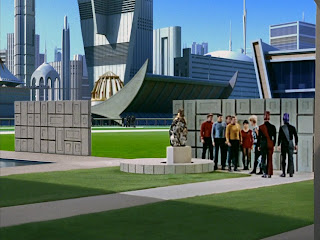Topher Morrison
 |
| From the BBC |
On Friday we briefly covered at AMTV News an intriguing new
development in the realm of neuroscience and its potential commercial and most
likely military applications. According
to the BBC, the new project “Sentinel (SystEm for Notification of Threats
Inspired by Neurally Enabled Learning)…is being touted as the world’s first
‘cognitive-neural’ binocular-threat warning system.
Sharon Weinberger explains how it works in practice:
“A high-tech camera scans a wide field of view, and then picks out potential threats based on sophisticated algorithms that mimic the human vision system. Then images of those threats are flashed in rapid succession through a viewer to the user, whose brain signals are being monitored. When the brain spots a potential threat and gives off the P300, the signal is detected and the user is visually alerted to focus on that specific image.”
The goggles were developed under a
research project funded by the Pentagon’s Defense Advanced Research
Projects Agency (DARPA). It is an
initial foray into “military neuro-enhancement using what is called a
brain-machine interface.” DARPA is
preparing to embark on a veritable “brain race” funding similar brain-computer
interface projects to help “intelligence analysts sort through satellite
imagery.”
Commercial and medical applications are foreseeable
including “controlling prosthetics” and for the “automotive industry” to help
design safer cars. According to
the chief scientist Dr. Deepak Khosla of HRL Laboratories, however, the “holy
grail of course” is whether or not these technologies can be designed to
“decode higher level information” – to read minds.
Beyond mind reading the military applications proffer “more
novel use of armed drones” ultimately allowing soldiers to fight remotely and
brining up a host of ethical issues over “projecting human intelligence into a
device” according to Jonathan Moreno, a professor of bioethics at the
University of Pennsylvania.
Should an adversary use similar technologies the dynamics of
future wars, where mass armies of drones fight each other under control of
distant humans, would be wildly dissimilar to today’s.
Star Trek Episode: “A
Taste of Armageddon”
In Gene Roddenberry’s first Star Trek series in 1967 the
original crew of the USS Enterprise visit the planet Eminiar VII whose people
fight a war with a neighboring planet.
However, once visiting the planet Captain James T. Kirk is warned by
Eminiar leaders he should not have come because a Vendikar fusion bomb had just
hit and killed a half million people.
The only problem is the capitol city is in pristine order, there are no
signs of war and no destruction to speak of.
The crew of the Enterprise soon finds out that the people of
Eminiar VII fight a totally simulated war, but it turns out to be no mere game
of intergalactic Risk. It is
completely controlled by computer algorithms, which launch wargame attacks and counterattacks,
then calculate the damage and select the dead. Citizens deemed as “killed” must submit themselves to real
executions inside “disintegration booths” based on the results.



No comments:
Post a Comment